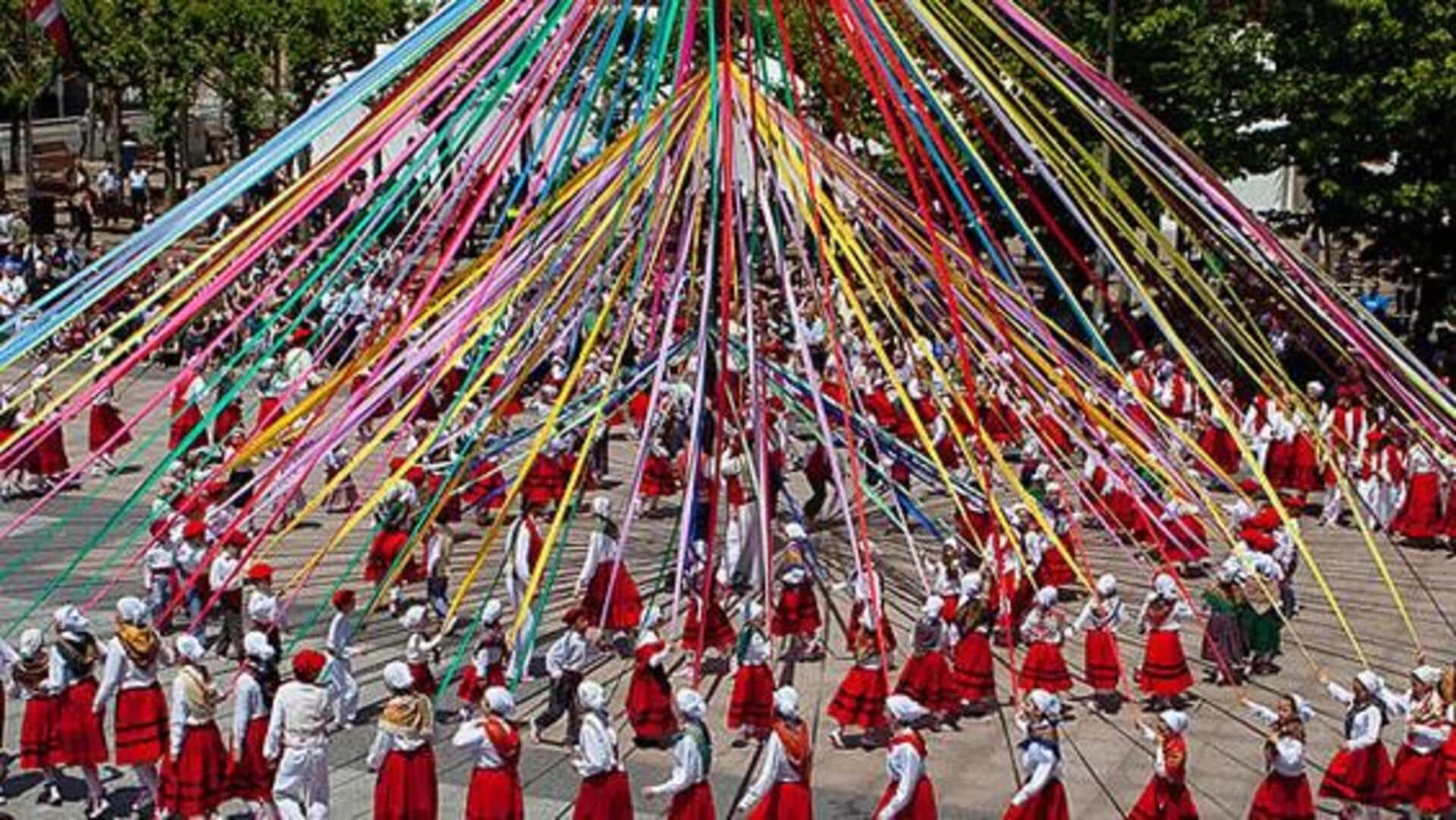
Understanding the tradition of maypole dancing
What's the story
Maypole dancing, a traditional folk dance originating in Western Europe, holds particular significance in Germany, Sweden, and the UK. Dancers move around a tall pole, holding ribbons attached to its top. They weave in and out, creating complex patterns with the ribbons as they wrap around the pole. This celebration, associated with May Day, marks the arrival of spring.
History
Origins and historical significance
The tradition of maypole dancing dates back to at least the medieval period, and some evidence suggests it may be even older. It originated as a pagan fertility rite associated with the arrival of spring. Over time, it evolved into a secular festivity that was observed annually by villages throughout Europe on May 1. The maypole represents life and renewal, themes that resonate across cultures.
Technique
The dance explained
Maypole dancing is a complex art form that requires coordination and practice. Dancers grasp colored ribbons attached to the top of the pole. They then weave in and out in predetermined patterns—some moving clockwise while others move counterclockwise—causing the ribbons to wrap around the pole in a specific way. The aim is to create a tight weave without tangling the ribbons. This requires precise timing and movement from all participants.
Today
Modern celebrations
Maypole dancing is a vibrant tradition throughout Europe, particularly during May Day celebrations. It is even part of the curriculum in schools, children practice the dances in their PE lessons in the weeks leading up to the event. Although it originated in Europe, communities around the world have adopted maypole dancing as a fun way to welcome the spring season.
Getting started
Learning Maypole dancing
If you're interested in learning maypole dancing, many community centers and folk dance groups start offering classes as spring approaches. These classes start with the fundamentals and progressively move toward complex patterns. Participating in these classes is a fun way for individuals or families to embrace cultural traditions and engage in outdoor physical activity.